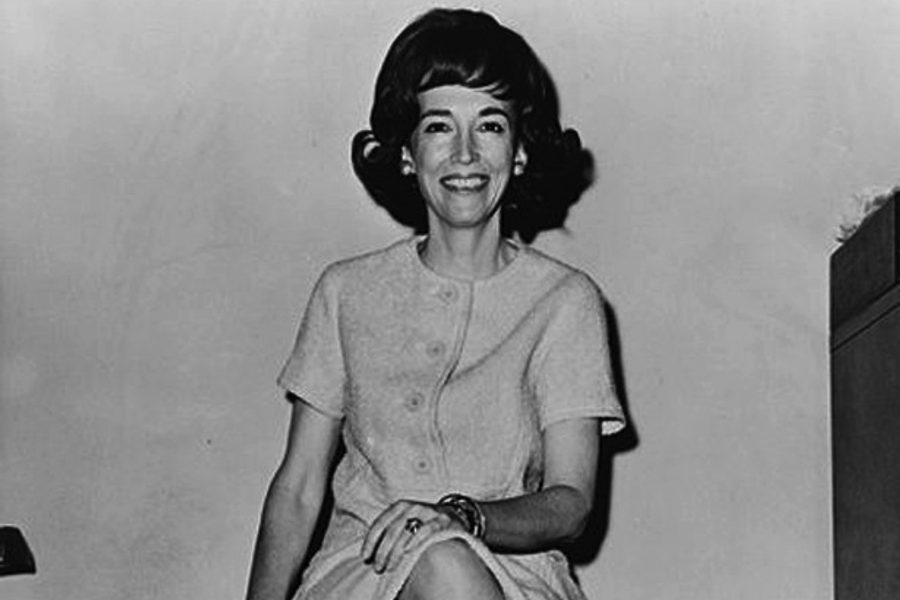How Helen Gurley Brown Sold (Out) Sex
The Cosmo mogul’s legacy wasn’t feminism; it was turning romance into a sales transaction.
Jude Ellison Sady Doyle

In the wake of Helen Gurley Brown’s death last week, there have been endless evaluations of her feminism. Was she a bold predecessor of third-wave sex-positivity, whose 1962 book Sex and the Single Girl established the possibility of a sexually and financially emancipated lifestyle for women? Was she a throwback who told women that sexual harassment was fun and games, plastic surgery was a must-have, and “feminism” was just another word for being a drag? Both views have passionate adherents. But the fact is, Gurley Brown was neither. She was just one of the world’s great advertisers.
To get a sense of Gurley Brown’s legacy, it might help to take a look at her baby, Cosmopolitan magazine, which she took over and revamped in 1965 after 17 years as an advertising executive. The front page of Cosmopolitan’s website, for example, has a quiz — “Are You a Good Flirt?” — wherein one can earn a rating anywhere from “Ketchup” to “Tabasco: You leave every man’s tongue burning.” Which sounds like a medical condition, actually, but is apparently good. You can also learn to “Read His Beach Body Language,” learn how to “Wow Him Every Time” or discover “30 Things To Do To A Naked Man.” (Not to spoil this for you, but I’m going to bet that at least 29 of those things are “have sex with him.”) And if you “Want a Better Boyfriend” — though one hopes you already have a good one, considering the amount of time you apparently spend reading about him — you can get him a subscription to CFG: Cosmo For Guys, where he too can learn sex tips such as “get naked too.” (I’m serious.)
You can already probably see the problems with this particular feminist legacy: It’s concentrated almost entirely on men and how to please them. There are a few feints at sexual equality — you could learn some “Steamy Ways To Turn You On” after you’re done flipping through the naked-guy manual — but for the most part, getting a boyfriend and giving him adequate orgasms are presented as both a woman’s main goals in life and her ultimate reward.
On Cosmo’s message board, women are asking very different questions. One wants to know: “How do I ask him to take a STD test?” Another wonders whether she is “being too forward” by using lube during sex. These questions hint at a huge problem with the Cosmo take on sexual freedom. In a conversation that’s all about an oft-capitalized “Him,” and specifically about “driving Him wild,” entirely reasonable things, like taking care of one’s sexual health, or trying to be satisfied during sex, become problems, because they might not be exactly what He wants.
Gurley Brown notoriously had a pillow embroidered with the phrase, “Good girls go to heaven, bad girls go everywhere.” But where they usually went, in her vision, was into a man’s life. And, simultaneously, up the corporate ladder: “Nobody likes a poor girl,” she admonished readers of Sex and the Single Girl. The single girl “is not a parasite, a dependent, a scrounger, a sponger or a bum. She is a giver, not a taker, a winner, not a loser.”
She had a specific sort of “loser” in mind: the wife of one’s boyfriend, who was dependent on his income. Gurley Brown’s single girl was no less exclusively focused on nabbing a man than the good girls hoping to catch a husband; the difference was that she took a market-driven approach in dating as in work. She saw herself as able to buy and sell various men as their stock went up and down. Financial independence simply allowed her the freedom to attain or discard those relationships. In Gurley Brown’s vision, women were not empowered sexual agents — if they were, their habits might be less exclusively man-pleasing and heterosexual — they were sexual capitalists, appropriating the fruits of male economic privilege with their sexual wiles. Although the single girl was not supposed to take, sponge or depend, accepting furs or jewelry from a wealthy man in exchange for sex was none of those things. It was a paycheck for a job well done.
One of the reasons the Cosmo sex manuals focus so exclusively on Driving Him Wild — aside from, you know, the sexism — is this relationship-as-paying-job model: He is the boss, You are the employee, and You hopefully get a nice big raise after efficiently and effectively doing 30 new things to him in the nude. Gurley Brown’s focus on independence did not preclude her marrying a wealthy man, or boasting that she “[looked] after him like a geisha girl.” It wasn’t selling out, it was getting a promotion; she went from employee to partner in his “firm.”
In For Her Own Good: Two Centuries of the Experts Advice to Women, Barbara Ehrenreich and Deirdre English note that there’s nothing deeply subversive about the straight swinging-singles lifestyle at all — which is why advertising took to it so quickly and wholeheartedly. “There’s nothing in this that business would be opposed to,” they quote an anonymous businessman as saying. “People living alone need the same things as people in families. The difference is, there’s no sharing. So really the trend is good because it means you sell more products.”
And this was written in 1978. Flash forward, to the 2000s, to Sex and the City’s Carrie Bradshaw, single girl, “marrying herself” by demanding that her friends buy her an expensive pair of shoes. Gurley-Brown-ishly, this does not preclude her later marrying a very rich man, who can buy her many expensive shoes. Gurley Brown knew how to sell; it’s how she made her way as a copywriter. And for the rest of her life, she sold the idea of freedom, fun and sex to her readers, by recommending they sell themselves: A worldview in which everything, from orgasms to loneliness to the shoes you’ll need to compete on the marketplace, can be solved by the right kind of shopping.
Jude Ellison Sady Doyle is an In These Times contributing writer. They are the author of Trainwreck: The Women We Love to Hate, Mock, and Fear… and Why (Melville House, 2016) and was the founder of the blog Tiger Beatdown. You can follow them on Twitter at @sadydoyle.








